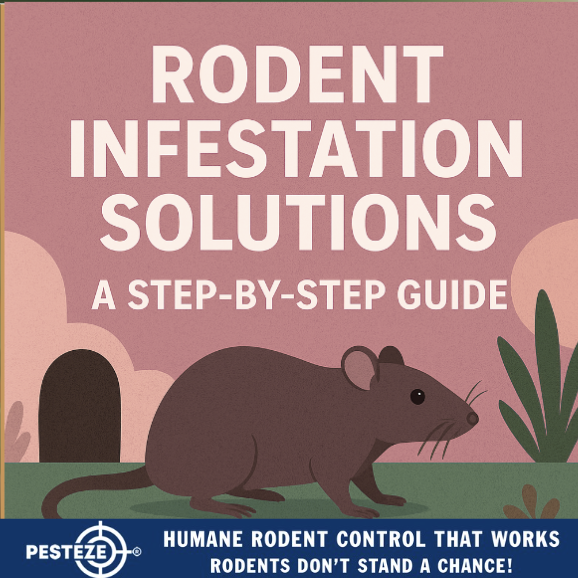RODENT INFESTATION SOLUTIONS: A STEP-BY-STEP GUIDE

RODENT INFESTATION SOLUTIONS: A STEP-BY-STEP GUIDE
SUMMARY
Rodent infestations can cause serious health risks, structural damage, and food contamination. This step-by-step guide provides practical solutions for identifying, preventing, and eliminating rodents using safe and effective strategies for long-term control.
FEATURES
-
Spot the Signs: Identify droppings, gnaw marks, and nesting areas early.
-
Seal Entry Points: Block cracks, gaps, and holes to stop rodents.
-
Maintain Sanitation: Secure food, clean spills, and remove clutter.
-
Use Natural Repellents: Essential oils, spices, and plants deter rodents.
-
Trapping Solutions: Snap traps, glue boards, and humane catch-and-release.
-
Professional Assistance: When to call experts for large infestations.
GUIDE DESCRIPTION
Rodent infestations are one of the most common pest problems faced by homeowners and businesses. Mice and rats are not only unsightly but also pose significant risks, from spreading harmful diseases to chewing wires that can cause electrical fires. Tackling an infestation requires a systematic approach that combines prevention, deterrence, and removal.
The first step is early identification. Rodents leave behind clear signs such as droppings in pantries or storage areas, gnaw marks on wood and wires, scratching noises in walls, and nests made of shredded paper or fabric. Identifying these signs early allows you to act before the infestation grows.
Once signs are detected, sealing entry points becomes a priority. Rodents can squeeze through openings as small as a quarter-inch, so carefully inspect your property. Seal cracks in walls, repair vents, and fill gaps with steel wool or caulk. Even small openings around doors and windows should be reinforced to prevent access.
Sanitation is equally important. Rodents are attracted to food and waste, so always store food in airtight containers, dispose of garbage promptly, and clean up crumbs or spills immediately. Decluttering spaces such as basements, attics, and garages removes potential nesting spots.
Natural repellents offer an eco-friendly layer of defense. Essential oils like peppermint, eucalyptus, and clove are highly effective when applied to cotton balls and placed in rodent-prone areas. Cayenne pepper and garlic also serve as deterrents, while plants such as mint or lavender can help repel rodents naturally.
If rodents are already inside, trapping becomes necessary. Snap traps remain one of the most effective methods for quick results. Glue boards and humane catch-and-release traps can also be used, depending on your preferences. Be sure to place traps along walls, behind appliances, and in areas with frequent rodent activity.
For severe infestations that are difficult to control, professional pest control services may be required. Experts have access to advanced tools and strategies that eliminate rodents while preventing future invasions.
By following this step-by-step guide—identifying signs, sealing entry points, practicing sanitation, using repellents, and applying trapping methods—you can regain control of your space and protect your property from rodent damage.
- Aahna Barma


Comments 0